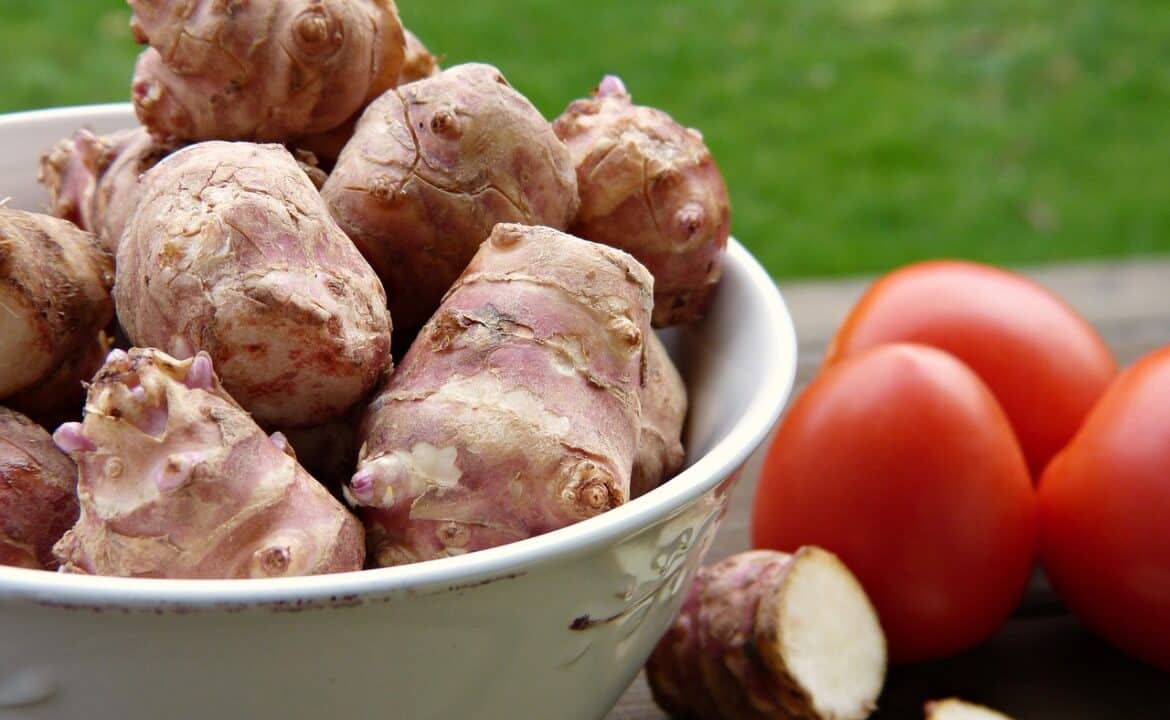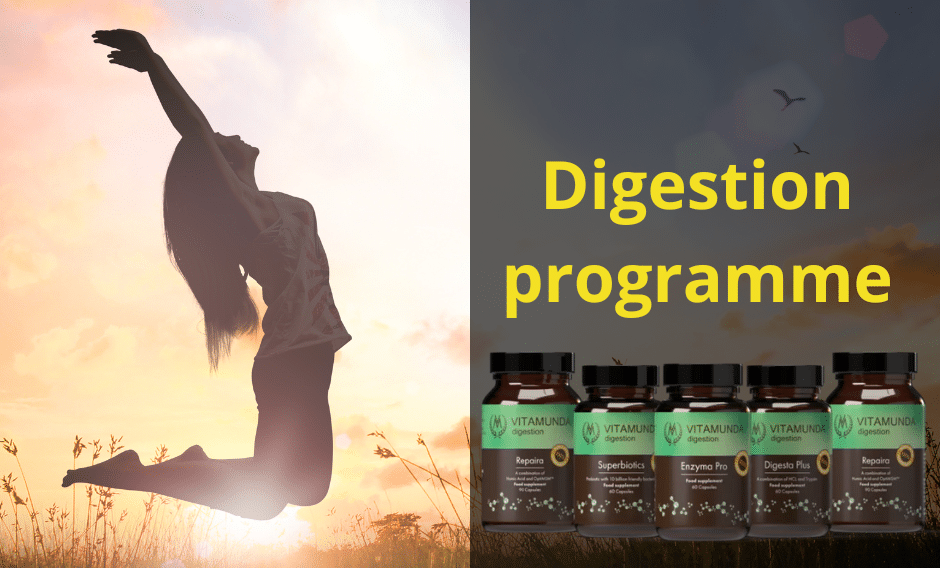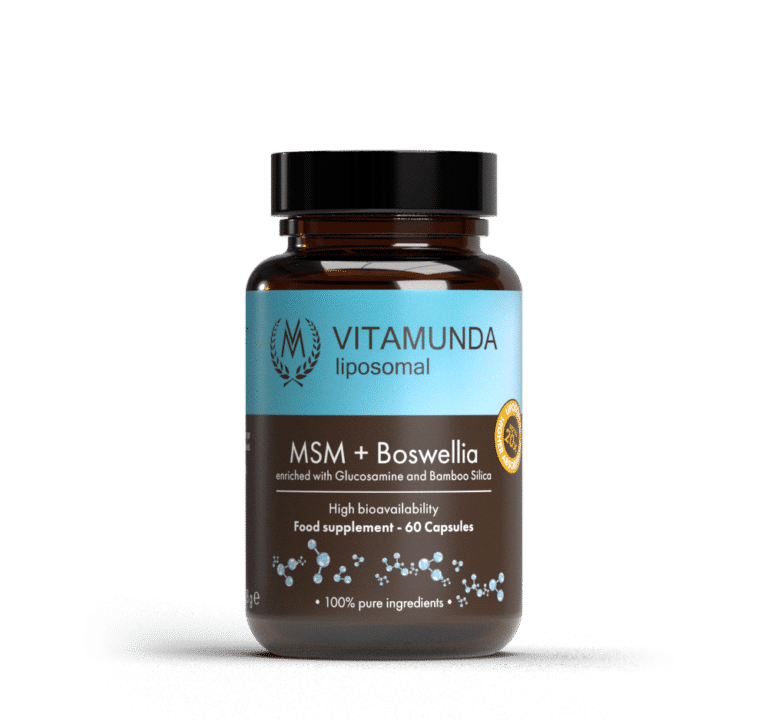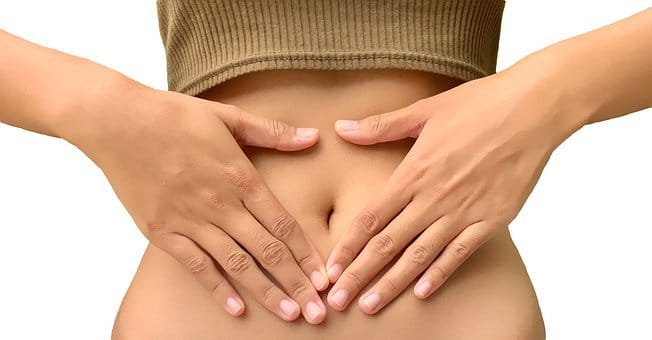Colon Cleansing; the relief is undeniable.
What is Colon Cleansing?
Colon cleansing is a popular alternative therapy that is said to remove toxins and waste from the colon and improve health. It is indeed said that the gut is the centre of wellbeing and many people have been surprised at how quickly they noticed the health benefits afterwards.
A few signs that you may need to Colon Cleanse:
- Bloating
- Headaches
- Stomach pain
- Can’t loose weight
- Thin stools
- Poor memory
- Trouble sleeping
- Undigested food particles
Vitamunda ColonCleanse
At LemonWellMed we’ve researched into the Vitamunda Colon program and currently sell the 3 day fast program which is a complete support for stomach and intestines. ColonCleanse by Vitamunda is based on a unique development from the work of trained Dutch Naturopath Marion Schaatsbergen.
Marion spent 40 years actually performing colon cleanses as the main treatment for the patients at her practice. She used and tried practically every different type of colon cleanse particularly, colon hydrotherapy and supplement based treatments. Although her patients were pleased with the results, Marion did not feel that the existing methods were as thorough or as comfortable as they should be.
ColonCleanse by Vitamunda removes the “biofilm”. Your colon has a natural moist layer on the surface, but over time it builds up a biofilm layer on top of that. This biofilm layer contains such things as unfriendly bacteria. In Marion’s practice she saw that getting rid of the biofilm gave the best results for a colon cleanse.
How does it remove the biofilm? In the most gentle way possible. The main active ingredient is absorbed into the biofilm where it swells until the biofilm eases away from the intestinal wall. You visibly see the biofilm (if you look!) during the treatment. This is an integral part of our program.
More than 120.000 programs have been sold. It is a proven, safe treatment. It has been recommended by more than 1,000 natural health care practitioners and it is gentle on the colon, unlike some treatments which can scratch the colon wall.
The ColonCleanse program helps maintain normal colon function by cleaning the entire intestinal system. When the intestine is clean, it is better able to absorb nutrients.
Therefore: You have more energy, you feel more alive and you have better digestion.*
*These statements have not been evaluated by The Food and Drug Administration. This product is not intended to diagnose, treat, cure, or prevent any disease.
Reviews
“To my surprise, I did not feel hungry during this treatment. An additional advantage is that I have lost 7 kg so I can get into my clothes more easily. When I saw the biofilm with my own eyes, I also felt much cleaner. After the cure I sleep half an hour less per night and I have more energy to do the things I like.” – F.J. ,Santpoort
“It’s a wrap! 3 days Energy Detox Diet. I felt good! I had enough energy, a fairly satiated feeling and no discomfort or pain from my stomach / intestines. At first I was a bit sceptical about biofilm story, but I was pleasantly surprised with what I found in the toilet every day. My intestines are my feeling so clean! I lost 2 kg in three days and the build-up and tape-down days (again: my goal was not to lose weight!, but that’s a nice addition).” – Debbie van Weelden , Simply Natural
You can find the Vitamunda 3 day ColonCleanse on our website here: Colon Cleanse UK – Lemon Well Med Health & Supplements
Vitamin D3 Needs Magnesium and K2. Here’s Why.
Most people know how important vitamin D is, not only in spring and autumn, but especially in the winter months. But did you know that when taking this vitamin, vitamin K2 and magnesium should also be taken? We’ll explain it to you here. But first vitamin D: why is this vitamin so important?
Vitamin D
Vitamin D is essential for our health. It is important for calcium and phosphorus
absorption for strong bones and healthy teeth, proper muscle function, cell renewal and good resistance to germs. More and more scientists no longer see vitamin D as a vitamin, but more as a multifunctional hormone, because it contributes to many processes in the body.
The Health Council wrote that vitamin D occurs naturally in a limited number of foods, such as fatty fish, liver, meat, eggs and milk products. And because a healthy diet contains insufficient vitamin D, even when enriched with vitamin D, people in many cases (and certainly above the age of 70) are dependent on supplements for an adequate supply of vitamin D. The importance of vitamin D is evident from research findings in recent decades. A large number of epidemiological and laboratory studies have shown a link between vitamin D deficiency and a large number of independent diseases, including various types of cancer, bone fractures and diseases, autoimmune diseases, high blood pressure and cardiovascular diseases. Falls in the elderly are also often a consequence of a lack of this vitamin.
But if you take vitamin D, why do you also need vitamin K and magnesium?
Many people do not know that vitamins D and K work together. Vitamin K was discovered in 1929 by Henrik Dam. This Danish researcher saw that this vitamin improved blood clotting and this discovery gave the vitamin its name. As more research was done, it came to light that vitamin K is involved in more bodily functions. For example, playing a role in building and maintaining strong bones and teeth. However, there is another important reason for taking vitamin K in addition to vitamin D. While vitamin D ensures that calcium is absorbed from the diet, vitamin K ensures that calcium is bound in places where it does not belong and is not deposited, such as the artery wall, joint cartilage and other soft tissues in the body. This keeps them supple and elastic and prevents arteriosclerosis.
Why magnesium for strong bones?
Vitamin D and calcium work closely together, it is responsible for calcium absorption, i.e. calcium from food gets into the bones. Consequently, vitamin D ensures strong bones. The element plays a role in the production, transport and activation of vitamin D. Precisely because magnesium converts vitamin D into its active form, it can help with calcium absorption.
Without sufficient magnesium, calcium is poorly absorbed in blood and bones. Moreover,
calcium can accumulate in the soft tissues and cause a form of arthritis. Magnesium in the right dosage can solve the problem of calcium deficiency. Sufficient magnesium levels in the body are essential for the absorption and metabolism of not only vitamin D but also calcium.
To work properly, it is essential, especially for magnesium that is usually poorly absorbed, to choose a high-quality supplement that the body can easily absorb. Liposomal products, in which the mineral or vitamin is packed into tiny fat-like balls, ensure excellent absorption when the intestinal function is good.
Check out our Vitamunda Vitamin D3 K2 Magnesium – Lemon Well Med Health Supplements here.
Anti-ageing and moisturising properties of hyaluronic acid
Anti-ageing and moisturising properties of hyaluronic acid
Hyaluronic acid has been well recognised by beauty industry as an anti-ageing and moisturising ingredient which can reduce fine lines and visible wrinkles in order to keep the skin smooth and young. Its moisturising properties help to keep the body’s tissues well hydrated and lubricated.
Hyaluronic acid, also called hyaluronan or hyaluronate is a gel-like substance that is naturally present throughout the human body, mainly found in the skin, eyes, joints and muscles. Hyaluronic Acid acts like a moisturiser for the tissue through binding water with collagen in the tissues, keeping them hydrated. One gram of hyaluronic acid is capable of holding as much as six litres of water. Sun exposure, smoking and pollution can lower the amount of hyaluronic acid in the skin. Its level decreases also with ageing.
According to a scientist Mao-Qiang Man (researcher at University of California San Francisco) stratum corneum hydration levels (the outermost layer of the skin) are likely the major contributor to “inflammaging” – a process of skin ageing due to existing inflammation. Man’s research suggests that a diseased, damaged (from UVA and UVB radiation) and wrinkly skin becomes part of the inflammation process, releasing chemicals that leads to further damage and inflammation. Hyaluronic acid can help with the skin hydration and support preventing the further damaging process in the skin.
Apart from keeping the skin smooth and young, anti-ageing and moisturising properties of hyaluronic acid have been used in the following fields:
- supporting joints health – it helps to keep them well lubricated, it enhances growth and development of cartilage, and it reduces inflammation
- dry eyes – hyaluronic acid was discovered first in the cow’s eye by a German scientist Dr. Karl Meyer in 1934. It makes up 95% of the fluid inside the eye, supporting the health of the eye/s cornea and retina. It also helps in absorbing shock and transporting nutrients
- wound healing – hyaluronic acid has also been identified as a support in acute wound healing
Hyaluronic acid can be applied topically in the forms of serums or as an ingredient of the skin creams but also injections are becoming more popular in the beauty industry (as HA joints injections). Hyaluronic acid is also a very popular ingredient of eye drops.
Hyaluronic acid supplementation has shown benefits in skin appearance, being considered as part of the anti-ageing supplement regime. It also helps with eyes and joint hydration. Liposomal formulas of hyaluronic acid can help with better absorption of the active ingredient and avoid being destroyed in the digestive tract before reaching the target tissues.
Vitamunda Hyaluronic Acid combined with Vitamin C contains 150mg of highly available hyaluronic acid and includes also vitamin C, contributing in collagen production – both ingredients can support your skin health and smoothness.
Author: Gosia Sojka – Certified Nutritional Therapist
Liver health
Top vegetables for liver health
We suggest the following 5 vegetables for improving liver health and function:
Dandelion: is mostly known as a herb; however, it is superb for liver function. The root can be made into a coffee while the leaves can be used up in a salad or smoothie.
Jerusalem artichoke: contain inulin which is a complex carbohydrate not broken down by the body. It promotes liver regeneration and stimulate bile flow. The artichoke must be fresh, otherwise the inulin breaks down into sugars. Inulin nourishes bifidobacteria.
Fennel: it aids digestion and prevents flatulence. Helps the liver to work less.
Onion: versatile containing bioflavonoids, calcium, and sulphur. Key in cholesterol and blood sugar health.
Garlic: nutrient powerhouse, and possibly the most useful. Not only antiviral and antibacterial but also widely used against parasites, worms, moulds, yeast. It is a must in any detox programmes.
Beneficial supplements for liver health
We suggest the following 4 supplements for liver health and support:
Glutathione: major antioxidant in the body produced in the liver. Key role in liver detoxification.
B – Complex: all B vitamins are needed and used by the liver. They are involved in both phases of the liver detoxification process. B vitamins work in synergy and so it is recommended to take the complex. Lack of these will lead to fatigue, mental, and emotional problems.
Zinc: a co-enzyme for SOD enzyme.
Magnesium: involved in over 300 enzymatic reactions.
Author: Anita Andor, Nutritional Therapist
Signs That Your Body Is Lacking Iron
Did you know iron deficiency is the most common nutritional disorder in the world?
According to the World Health Organisation more than 40% of the world’s population suffers from iron deficiency! Haemoglobin – Iron has an essential role carrying this protein in red blood cells most importantly transporting oxygen in the body. Iron seems to be the most common deficiency found mostly in women which can be from pregnancy, large blood loss and heavy menstrual periods. Insufficient intake of iron can cause anaemia, here’s the sign you should look out for:
- Brittle Fingernails – thin flat nails that can break easily.
- Fatigue – the most common symptom due to the lack of red blood cells transporting oxygen around the body. You will feel weak and more tired than usual.
- Dizziness –‘seeing stars’ as they say , this occurs when not enough oxygen reaches the brain and may cause headaches.
- Shortness of Breath – due to a low iron level less oxygen reaches parts of the body, if the body’s oxygen level is low it will cause shortness of breath.
- Damaged Hair – apart from using too many heat tools on your locks, dry fragile hair can be a result of the lack of iron
- Pale Skin – Lack of red blood cells can cause your skin to look washed out, the more haemoglobin there is the more your skin will look plump and rosy.
The easiest way to check is requesting a Red Blood Cell count at your GP. NHS informs that a normal count for men would be a guide of 4.0 – 5.9 and woman 3.8 -5.2. If you are lower than average your doctor will prescribe you to take iron supplements. In the meantime, include plenty of iron rich foods for example leafy greens, beef, sardines, beans, lentils, nuts, seeds and fortified cereals.
We recommend our Vitamunda Iron formula – liposomal – Lemon Well Med Health Supplements where the liposomal ensure better absorption and also prevents stomach upsets connected to iron supplementation.
Hacks to stay healthy
HEALTH HACKS ON HOW TO GET BACK ON TRACK AFTER THE FESTIVE SEASON
Have you overindulged during the festive season? And oh no, we don’t just mean Christmas and New Year’s Eve. It is the whole of December to blame for! Christmas work parties, year-end goodbyes and so on…
We heard you want some health hacks on how to get back on track!
Cut out alcohol
Aim to do at least four weeks of dry January; make it February too!
January is the perfect month to start with good habits, and if it is too difficult to do so, it is a good idea to ask why? What is the root cause for not being able to do heavy periods for longer? There might be emotional reasons.
Wrap up and go for a walk (in daylight)
Yes, it is cold, super cold, but you are burning more calories. That is because the body works harder to maintain a core temperature. The cooler temperature also boosts brain function and activates the immune system to fight off pathogens.
Stay away from eating out
While it feels a treat not spending time at home cooking, many restaurants, especially fast food places, offer dishes that use poor-quality ingredients and are incredibly high in trans fats. Trans fats are associated with chronic diseases such as cancer, diabetes, cardiovascular issues, etc.
Eliminate inflammatory foods
Overconsumption of processed and refined foods such as pastries, cookies, bread, dairy products, soft drinks, takeaways, and deep-fried products are the main contributors to inflammation triggered by food intake. Eliminate them for one to two months. You might just leave them behind for good!
One week winter cleanse
Challenge yourself further by trying out a cleansing programme with bone broth, cooked vegetable soups, and legume-based dishes to give the digestive system a break. Consult with a nutritionist to ensure you are not missing essential nutrients!
The Vitamunda Digestion Programme is the perfect partner to support your cleanse. It consists of enzymes, probiotics, and other vital nutrients involved in gut healing protocols.
Resilience
Resilience
“Resilience is to always be true to yourself”
Definition of resilience: the ability of a person to adjust to or recover readily from illness, adversity or major life changes.
This is what you read when you look at this word up on the dictionary: a straightforward, simple and impersonal explanation.
However, abstract words carry a deeper meaning, an emotional meaning which varies from person to person.
Resilience is hard to be defined with words. It can only be explained based on how you feel when you think resilience. Feelings are hard to be put into words. They cannot be labelled or put into categories.
Only you know the true meaning of this word.
So here is what it means to me:
Resilience is to stay the course when you know that you make decisions and choices based on the circumstances and information that you have in any now moment.
Resilience is to know what is best for you and therefore having the courage to say no or yes to others.
Resilience is to resist the noises that come from the outside world, especially the noises that create fear.
Resilience is to listen to others with your heart and your intuition so you know what to accept and what to ignore.
Resilience is to trust yourself, to believe in yourself regardless of what is going on around you. Your circumstances should lead the way in any now moment.
Resilience is to surround yourself with people who have your best interest at heart.
Surround yourself with people who encourage you, motivate you, support you to achieve your goals whatever they may be.
Resilience is to know that when life happens in a way that you didn’t expect it or even when you didn’t want it to happen in a certain way, you know that there is always the next now moment whereby you can do things differently to get the results you want.
Above all, it is to always be true to yourself.
I’m aware that this is how I feel when I think about it. I’m also aware that all I’ve written here may or may not resonate with you.
It doesn’t really matter.
What matters is how you feel when you think resilience.
So let’s take action right now.
Be aware of how you feel when you think about it and remind yourself how you feel about it as often as you need.
If you are wondering how you do this, I can tell that you do it by feeling it.
If you like this blog and would like to have a chat with me, go on my website and sign up for a Free Consultation at:
https://www.reginahypnotherapy.co.uk
Author: Regina Brancato-Dunderdale – BA, NLP Master Practitioner, Master Hypnotherapist and Time Line Therapy®
Read also my other blog about the connection between mind and body.
Liposomal Glutathione Benefits
LIPOSOMAL GLUTATHIONE BENEFITS
Glutathione (GSH) is a key intra- and extracellular protective antioxidant with many benefits. It not only recycles other antioxidants such as Vitamin C and E but also sacrifices itself during the process. Free radicals move down the antioxidant chain starting with Vitamin C, E, alpha lipoic acid, and finally glutathione.
Liposomal glutathione and liposomal R-Alpha-Lipoic-Acid are highly
effective thanks to the improved absorption and bioavailability.
Most of us know that inflammation and oxidative stress are the leading cause of chronic diseases today. So, understanding and appreciating why glutathione is critical to every aspect of our health helps us to reduce inflammation and oxidative stress.
Inflammation
Inflammation is an essential and protective response to tissue injury. Acute inflammation is needed to remove the damaging agents and the injured tissues, thereby promoting tissue repair. When this occurs in an uncontrolled manner, and continuously, acute inflammation develops into chronic inflammation.
Oxidative stress
During the acute inflammatory phase, the cells recruit reactive oxygen species (ROS) to the injured site. ROS are metabolic by-products acting as signalling molecules (regulate cell growth and death) and mediators of inflammation. Why are they harmful? Because they oxidize protein and lipid molecules as well as damage DNA. ROS is an essential part of biological processes; however, as with everything else in life, too much of a good thing can be taxing! Oxidative stress means that there are insufficient antioxidant levels in comparison to reactive oxygen and nitrogen species.
Chronic inflammation leads to oxidative stress and vice versa!
Glutathione is the mother of all antioxidants! It has a self-regeneration capacity and is present in every single cell.
Several factors deplete glutathione levels. We invite you to watch the recordings of our webinar to learn more on this by clicking here.
Depleted Glutathione levels are contributing to:
- Neurodegenerative conditions such as Alzheimer’s, Parkinson’s, and Huntington’s
- Pulmonary complications: chronic obstructive pulmonary disease (COPD), asthma and acute respiratory distress syndrome
- Autoimmunity
- Cholesterol oxidation
- Chronic age-related diseases (cataracts, macular degeneration, hearing impairment and glaucoma)
- Impaired detoxification
Let’s look at the importance of glutathione in detoxification, brain and lung health:
Detoxification
Glutathione is involved in detoxifying xenobiotics (toxins) and other internal compounds
produced by the body. While it exists in every single cell in the body, the concentration is ten times higher in the liver cells. During Phase II liver detoxification, glutathione joins forces with an enzyme called glutathione -s transferase and attaches itself to the toxins. It neutralizes them so they can be expelled from the body without causing damage.
Brain Health
In Alzheimer’s disease, protein deposits, plague forms, and synaptic connection loss occur, leading to cognitive impairment. In addition, the brain is more vulnerable to oxidative damage than other body parts due to the high levels of unsaturated lipids, oxygen, redox metal ions, and poor antioxidant systems.
Lung inflammation
A central feature of lung inflammation – such as idiopathic pulmonary fibrosis, acute
respiratory distress syndrome, cystic fibrosis and asthma – is compromised alveolar and
bronchial function. GSH is important in mitochondrial respiration, immune modulation,
remodelling of the extracellular matrix, and apoptosis (cell death). ROS and reactive nitrogen species (RNS) also act on certain amino acids in proteins (e.g. enzymes, kinases) such as methionine, tyrosine and cysteine, profoundly altering the function of these proteins in inflammatory lung diseases. Some people are more susceptible to lung inflammation due to genetic reasons.
Oxidants are not only produced by metabolic processes; we inhale them. Ozone, cigarette smoking, nitrogen dioxide and sulphur dioxide are exceptionally dangerous and exacerbate the inflammatory process. Tumor Necrosis Factor (TNF-a ) is a pro-inflammatory cytokine recognized as a prime mediator of lung inflammation. If you are genetically prone to have a higher TNF activity – like me – you are more likely to suffer from lung complications. Therefore, liposomal glutathione was an absolute life-saver for me during covid and it had really many benefits.
How can you increase your levels?
Increasing cruciferous vegetables and protein-rich (considering glutathione is a tri-peptide) foods help the production of glutathione. However, I believe this is insufficient – considering the toxic load of today’s pollution and diet – so I recommend supplementing with liposomal glutathione, which really has many benefits. Research confirms that liposomal formulations offer the highest absorption. In addition, alpha-lipoic acid is a great way to stimulate glutathione production.
Sadly, ageing significantly contributes to depleting levels, so I recommend supplementing if you are over thirty. Glutathione levels are lowest in the morning. Therefore, supplementing in the morning on an empty stomach and before bedtime is the most effective way to replenish and ensure better absorption.
How long should glutathione be taken?
At least for one month if you are in good health and looking for maintenance only. I have
seen notable results after two months of consumption, and I believe it is safe for up to three months. However, most research is conducted on six months trials which suggests that it can be taken for up to six months. The typical dosage is between 250 and 1,000mg daily, depending on the person and on the formulation. This is based on my clinical experience.
Liposomal supplements
Powder liposomal supplements are absorbed 20 times better by the body in comparison to regular supplements. You can get maximum effects by consuming lower doses. They are pure, natural, and biocompatible. A game-changing innovative new way to get supplements, preventing stomach acids prematurely breaking down the active ingredients.
If you want to know more about inflammation and how to reduce it, click here to read Anita’s article.
Author: Anita Andor, Women’s Health Specialist – mBANT Nutritional Therapist
References
https://www.sciencedirect.com/science/article/pii/S0925443911002262
https://www.ncbi.nlm.nih.gov/pmc/articles/PMC3929010/#B285
https://erj.ersjournals.com/content/erj/16/3/534.full.pdf
https://content.iospress.com/articles/journal-of-alzheimers-disease/jad181054
https://www.ncbi.nlm.nih.gov/pmc/articles/PMC4310837/
Science-backed Benefits of MSM Supplements
MSM supplements benefits
Methylsulfonylmethane, more commonly known as MSM, is one of the most popular dietary supplements and it has really many benefits. It can be used to treat a wide array of symptoms and conditions.
It’s a sulfur-containing compound found naturally in plants, animals, and humans. It can also be produced in a lab to create dietary supplements in powder or capsule form. MSM is widely used in the alternative medicine field and by people looking for a natural way to relieve joint pain, reduce inflammation and boost immunity. In addition, research supports its use in treating several conditions, amongst which joint pain and symptoms of arthritis.
MSM supplements my help decrease Joint Pain
One of the most popular uses of MSM is to decrease joint or muscle pain. It has been shown to benefit those with joint degeneration, a common cause of pain in the knees, back, hands and hips. Studies have shown that MSM significantly reduces inflammation in your body. It also inhibits the breakdown of cartilage, a flexible tissue that protects the ends of your bones in joints (1).
A study with 100 people over the age of 50 found that treatment with a supplement containing 1,200 mg of MSM for 12 weeks decreased pain, stiffness and swelling in the joints, compared to a placebo (2). The group receiving the supplement also reported improved overall quality of life and less difficulty walking and getting out of bed (2).
Another study of 32 people with lower back pain found that taking a glucosamine supplement containing MSM significantly reduced lumbar stiffness and pain upon movement, plus greatly increased quality of life (3).
SUMMARY – Studies have shown that MSM is effective in reducing joint pain, stiffness and swelling. In doing so, it can improve your quality of life.
MSM supplements may help alleviate arthritis symptoms by reducing pain and stiffness
Arthritis is a common inflammatory condition that causes pain, stiffness, and a reduced range of motion in your joints. Since MSM has powerful anti-inflammatory properties, it’s often used as a natural alternative to medications to improve arthritis-related symptoms.
A study in 49 people with knee osteoarthritis found that taking 3.4 grams of MSM per day for 12 weeks reduced pain and stiffness and improved physical function, compared to a placebo (4).
Additionally, it can enhance the effectiveness of other common supplements used to treat arthritis such as glucosamine sulfate, chondroitin sulfate and boswellic acid*. One study found that combining MSM with glucosamine and chondroitin was more effective at decreasing pain and stiffness in people with knee osteoarthritis than glucosamine and chondroitin alone (5).
Another study showed that a daily supplement containing 5 grams of MSM and 7 grams of boswellic acid was more effective than glucosamine at reducing pain and improving function in people with knee osteoarthritis (6). What’s more, the people who received the MSM and boswellic acid supplement were less dependent on anti-inflammatory medications than the glucosamine group (6).
SUMMARY – MSM supplements have been shown to help reduce pain and stiffness in people with arthritis. They may also help improve physical function.
*Boswellic acids are a series of compounds that are produced by plants in the genus Boswellia (also known as Indian frankincense).
Safety
The use of MSM is very safe. MSM is one of the least toxic substances known. Subjects who took 1 gram of MSM per kilogram of body weight daily for one month experienced no negative side effects. Slight detoxification symptoms may (temporarily) occur when taking MSM, such as loose stools, skin rashes, mild headaches, and fatigue. If necessary, the dose can then be slightly reduced.
Build up the dose gradually over 2 to 3 weeks (the dose can be increased every 2 days). Take the dose divided over the day with meals (or on an empty stomach). The maximum dose also depends on intestinal tolerance and (severity of) the condition. Under the supervision of a professional, the dose can be increased if necessary.
Our liposomal formula with Glucosamine, MSM, Boswellia, and Bamboo Silica is very effective and highly absorbed.
LIPOCELLTECH™ – latest generation of liposomal technology
Liposomes have long been used as an effective pharmaceutical delivery method. More recently the liposome delivery method is becoming more common in natural health. The active ingredients are enveloped in a bubble of phospholipids which are fat molecules that make up the main part of the cell wall. This protects the active ingredients and allows them to better survive the digestive process and enter the intestines. Here the liposome fuses with the cell walls and the active ingredients are released and enter the blood stream. The phospholipids of the liposomes are then used in the body as they are identical to the cell membrane phospholipids.
Our supplements are powdered liposomal products from Vitamunda and use LipoCellTech technology. Advantages:
- Only pure ingredients. No fillers, preservatives, or other non-active ingredients
- Powder has a neutral flavour
- Long shelf life. Powder in capsules has a shelf life of up to 2 years from the date of production, without losing its efficacy
- High bioavailability
- Natural production method without use of heat, pressure, or chemicals
- Guaranteed high-quality liposomal products
References
1) Ezaki J, Hashimoto M, Hosokawa Y, Ishimi Y. Assessment of safety and efficacy of methylsulfonylmethane on bone and kneejoints in osteoarthritis animal model. J Bone Miner Metab. 2013 Jan;31(1):16-25. doi: 10.1007/s00774-012-0378-9. Epub 2012 Aug 10. PMID: 23011466.
2) Xu G, Zhou T, Gu Y, et al. Evaluation of the Effect of Mega MSM on Improving Joint Function in Populations Experiencing Joint Degeneration. Int J Biomed Sci. 2015;11(2):54-60.
3) Tant L, Gillard B, Appelboom T. Open-label, randomized, controlled pilot study of the effects of a glucosamine complex on Low back pain. Curr Ther Res Clin Exp. 2005;66(6):511-521. doi:10.1016/j.curtheres.2005.12.009
4) Debbi EM, Agar G, Fichman G, Ziv YB, Kardosh R, Halperin N, Elbaz A, Beer Y, Debi R. Efficacy of methylsulfonylmethane supplementation on osteoarthritis of the knee: a randomized controlled study. BMC ComplementAltern Med. 2011 Jun 27;11:50. doi: 10.1186/1472-6882-11-50. PMID: 21708034; PMCID: PMC3141601.
5) Lubis AMT, Siagian C, Wonggokusuma E, Marsetyo AF, Setyohadi B. Comparison of Glucosamine-ChondroitinSulfate with and without Methylsulfonylmethane in Grade I-II Knee Osteoarthritis: A Double Blind Randomized Controlled Trial. Acta Med Indones. 2017 Apr;49(2):105-111. PMID: 28790224.
6) Notarnicola A, Maccagnano G, Moretti L, Pesce V, Tafuri S, Fiore A, Moretti B. Methylsulfonylmethane and boswellic acidsversus glucosamine sulfate in the treatment of knee arthritis: Randomized trial. Int J Immunopathol Pharmacol. 2016 Mar;29(1):140-6. doi: 10.1177/0394632015622215. Epub 2015 Dec 18. PMID: 26684635; PMCID: PMC5806735.
How to Restore Gut Health Naturally
We all heard that fibre and probiotics intake plays a fundamental role in restoring gut health, but what more can we do?
We can make many small and simple changes to naturally improve gut function without drugs that thin the gut lining and only temporarily mask the root cause. We all need a road map that we can act upon to achieve meaningful changes. While this is not a personalised plan, it is a great starting point to optimal gut health.
The Art of Eating:
The way we choose to eat is somewhat reflexive. We don’t think about that; we just do it. We assume that our bodies have it easy in breaking down food. We couldn’t be further from the truth.
Chewing
Chewing food properly is one of the simplest changes you can incorporate into your daily life. Why chewing is so important? Firstly, it kick starts digestive enzymes production and secondly, it ensures larger particles are broken down into smaller pieces. These aspects are essential to ensure we reduce stress on the oesophagus and the stomach. Bloating, flatulence, diarrhoea, constipation, and food intolerances are widespread culprits when larger food particles reach the digestive organs.
Surroundings
Being in a relaxed environment and with a relaxed mindset is more important than you think! Grabbing food on the go and answering emails and messages are the most common habits that are not serving our digestive health. The opposite of Fight or Flight is Rest and Digest. The parasympathetic system decreases our heart rate, alertness, and muscle tone during this response. Digestion is stimulated.
Digestive “Juices”
We want to have a good amount of hydrochloric acid, pancreatic juices, and bile. The lack of digestive juices results in undigested food, and we not only become vitamin and mineral deficient and invite a host of more serious health conditions. Chewing food while in a Rest and Digest mode is the first step. Consuming ginger, apple cider vinegar, bitter green leafy veggies and, in some cases, foods high in histamine is sufficient. Some people require more help, and we may need to use supplements such as betaine HCL with pepsin, zinc, and B complex.
Food Combining
The idea here is that we should not mix foods that challenge each other. This eases the digestion process as well as ensures more varied food options.
- Starchy foods such as bread and potatoes are not to be combined with heavy proteins such as meat and cheese. Why? Protein is mainly digested in the stomach, while starchy carbs are absorbed in the small intestine. Protein digestion takes much longer than starchy carbs, which means fermentation kicks in, resulting in gas and indigestion.
- Avoid mixing proteins and fats together. Fat inhibits digestive juices needed to break down protein and digested in the small intestine. Fried foods such as bacon and eggs are very poor food combinations.
- Avoid carbohydrates with acid fruits in the same meal. A tomato sandwich is a perfect example. Bread is broken down in the mouth in an alkaline environment. Brining in an acidic food reduces the effect of the enzyme.
Pairing the right foods together is one of the most beneficial ways to improve small intestinal bacterial overgrowth.
Remove Toxins and Pathogens
Unwanted invaders come in many forms. The body produces toxins internally (endogenous) as part of the daily biochemical processes, and also we ingest them. External toxins (exogenous) are alcohol, tobacco, recreational drugs, medicines, additives, preservatives, etc.
Pathogens very often get into our bodies through drinking and eating. However, sometimes we are not aware of it, as we do not present with symptoms. Therefore, it is good to test to have an accurate landscape on which pathogen or pathogens cause the issues. Then, the protocol is formulated depending on the type of pathogen (bacteria, fungi, parasite, virus).
Hydration
The human body is primarily made up of water. We cannot survive without water for longer than five days. When we are young, intracellular fluid (inside the cell) is much higher than extracellular fluid (outside the cell). As we age, this ratio shifts and our cell’s ability to absorb water decreases and can be dehydrated. Discussing the functions and role of water in the human body is outside the scope of this article.
- Coffee, tea and alcohol are all diuretics. Always drink 1-2 glasses of water when you consume these drinks.
- Fruits and vegetables generally have high water content. For example, tomatoes and lettuce are 95% water, while melons, oranges, broccoli, and carrots are 90% water. So go wild with consuming the rainbow!
- The purity of the water is paramount. If your budget does not support installing a water filtration system in your home, go for a simple Brita Jug and add charcoal sticks to it to get double filtration.
Elimination
Constipation increases the risk of faecal toxins passing into the bloodstream and recirculating. Additionally, it changes the gut microbiome composition. Methane producing bacteria is more prevalent, which further slows transit time. There are some simple changes to improve bowel function:
- Increase fibre and water consumption. Bulking up and softening the stool are both widespread solutions to address constipation.
- Moderate cardio exercise stimulates the bowels. Constipation loves a sedentary lifestyle.
- Supplement with magnesium (600-800mg daily). Magnesium stimulates muscle movement.
Fasting
The human body uses up about 50% of its energy for digestion. Regular fasting resets the body by redirecting that energy to other biochemical processes. Therefore, when we are unwell with no appetite, we must listen to our bodies and refrain from eating. A licensed alternative practitioner should supervise longer fasts (over 48 hours). All toxins are mobilised into the bloodstream from fat tissue during a fast, which is unpredictable. I invite you to watch our webinar on belly fat and fasting to learn how and when to do fasting safely. Our previous blog post Gut Microbiome and human health is also very informative and useful to read.
There are a lot of misconceptions and uninformed views behind some of the most popular trends and diets. However, the above recommendations are safe, simple, and effective. Put them in practice today!
Author: Anita Andor
Women’s Health Specialist
mBANT Nutritional Therapist










